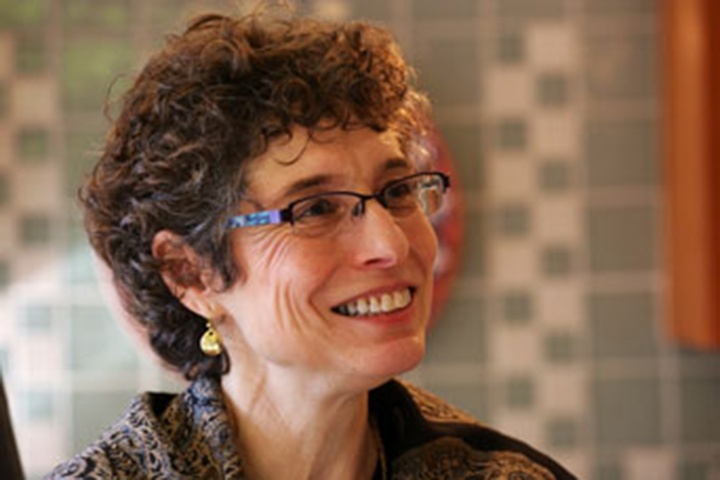Alumni Spotlight: AnnaLee Saxenian, (PhD'89)
A View of the Valley

AnnaLee Saxenian, PhD 1989
Not every municipality looks like quaintly historic Concord, Massachusetts, where AnnaLee Saxenian, PhD 1989, grew up. Nor do they all resemble Hong Kong, where she first learned about city and regional planning. Communities exist built not around town halls and school boards, but around commerce and labor. And it was in one of these less traditional "communities" that the onetime aspiring city planner found her stride.
Now dean of the multidisciplinary and highly innovative School of Information at the University of California at Berkeley and a professor in Berkeley's city and regional planning department, Saxenian is the author of several books on Silicon Valley, the Northern California region celebrated as America's most effective incubator for innovation.
After earning a B.A. in economics at Williams College in the idealistic early 1970s, Saxenian was working in then-impoverished Hong Kong when she felt the need for a more concrete tool to fight injustice and advance international development. She sought it in the planning department at Berkeley, where she penned a master's thesis that predicted – erroneously, she now allows – that Silicon Valley would stop growing.
Following a brief career with the United Nations, she continued her planning studies at MIT, but changed tracks after taking a course with political science Professor Susanne Berger and encountering other department members who shared her interests in political economy and economic development.
As a doctoral candidate in political science at MIT, Saxenian decided to "revisit" Silicon Valley and find out how her earlier predictions of its demise had gone so happily amiss.
"Based on the models available when I was pursuing my master's," she explains, "it had seemed reasonable to assume Silicon Valley would follow the paths of older industrial regions like Detroit and Pittsburgh, where entrepreneurial ventures were swallowed up into a handful of big firms. Instead, Silicon Valley flourished, continuing to generate start-ups. I wanted to understand why."
In 1994 – five years after joining the Berkeley faculty as an assistant professor – Saxenian published her findings in "Regional Advantage: Culture and Competition in Silicon Valley and Route 128." The book contrasted the relative decline of the minicomputer industry along Route 128 – Massachusetts' long-established engineering hotbed – with the success of the upstart ventures south of San Francisco.
Key to the difference in outcomes, Saxenian argued, were the disparate cultures of the regions. Route 128 technologists, working in abandoned textile mills, created large, bureaucratic firms that jealously preserved corporate autonomy and secrecy, seeing no reason to collaborate on projects or share technologies. By contrast, the engineers in what came to be called Silicon Valley forged a spirit of joint enterprise along with their counterparts at Stanford, Berkeley and other local institutions.
"Far removed from the East Coast centers of political and economic power, everyone in Silicon Valley in the '70s felt like an outsider, so they banded together to work cooperatively," Saxenian says. "They shared information freely, moved frequently between companies and invested earnings in other people's ventures. Venture capital and other professional services emerged to support a continuing flow of new start-ups and a more open, networked model for growing them."
The resulting decentralization gave Silicon Valley an edge in the unstable business environment of the 1980s and 1990s. While Digital, Wang and other giants that anchored 128 ran aground on the shores of rapid change, Silicon Valley's networks of specialized start-ups and team-based firms were able to adapt quickly to circumstances, sailing beyond defense work into semiconductors, computer hardware, software, Internet, E-commerce and Web services and applications.
In "Silicon Valley's New Immigrant Entrepreneurs" (1999), Saxenian showed how the original Silicon Valley demographic – "mostly white guys from the Mid-West" – had expanded to accommodate a growing number of engineers who'd originally come from overseas for graduate school.
"Most of what we previously knew about immigrant businesses focused on small firms with marginal jobs: the Korean grocer, the Chinese textile worker. But in Silicon Valley I found immigrants starting companies that stood at the leading edge of technology in the global economy," Saxenian says.
In her latest book, "The New Argonauts: Regional Advantage in the Global Economy" (2006), Saxenian updated the story again, exploring how immigrant engineers trained in the valley have helped extend its influence by bringing entrepreneurism and the tools of venture capitalism to their homelands while forging ties with U.S. companies.
"These people play a bridging role," she says. "Instead of competing with the United States, they are taking their language skills, their strong international contacts, and their knowledge of how to start companies, and putting them to work to create new jobs, new opportunities and new markets in other parts of the world."
Saxenian reflects on her time at MIT as a turning point in her career: "The MIT Political Science Department transformed me and my world view. I gained theoretical frameworks for thinking about the world, as well as the confidence to explore the reality of political, economic, and social change on the ground, whether in Silicon Valley or India. It also gave me an intellectual community for life. I am still in touch with many of my graduate student and faculty friends from MIT in the late 1980s; and its difficult to overstate the importance of these relationships, even today. Finally, the department shaped my professional trajectory in unanticipated ways. I agreed to become Dean of the UC Berkeley School of Information in part because I saw in this small, new program the opportunity to build something that paralleled the unique cross-disciplinary community I'd experienced at MIT."